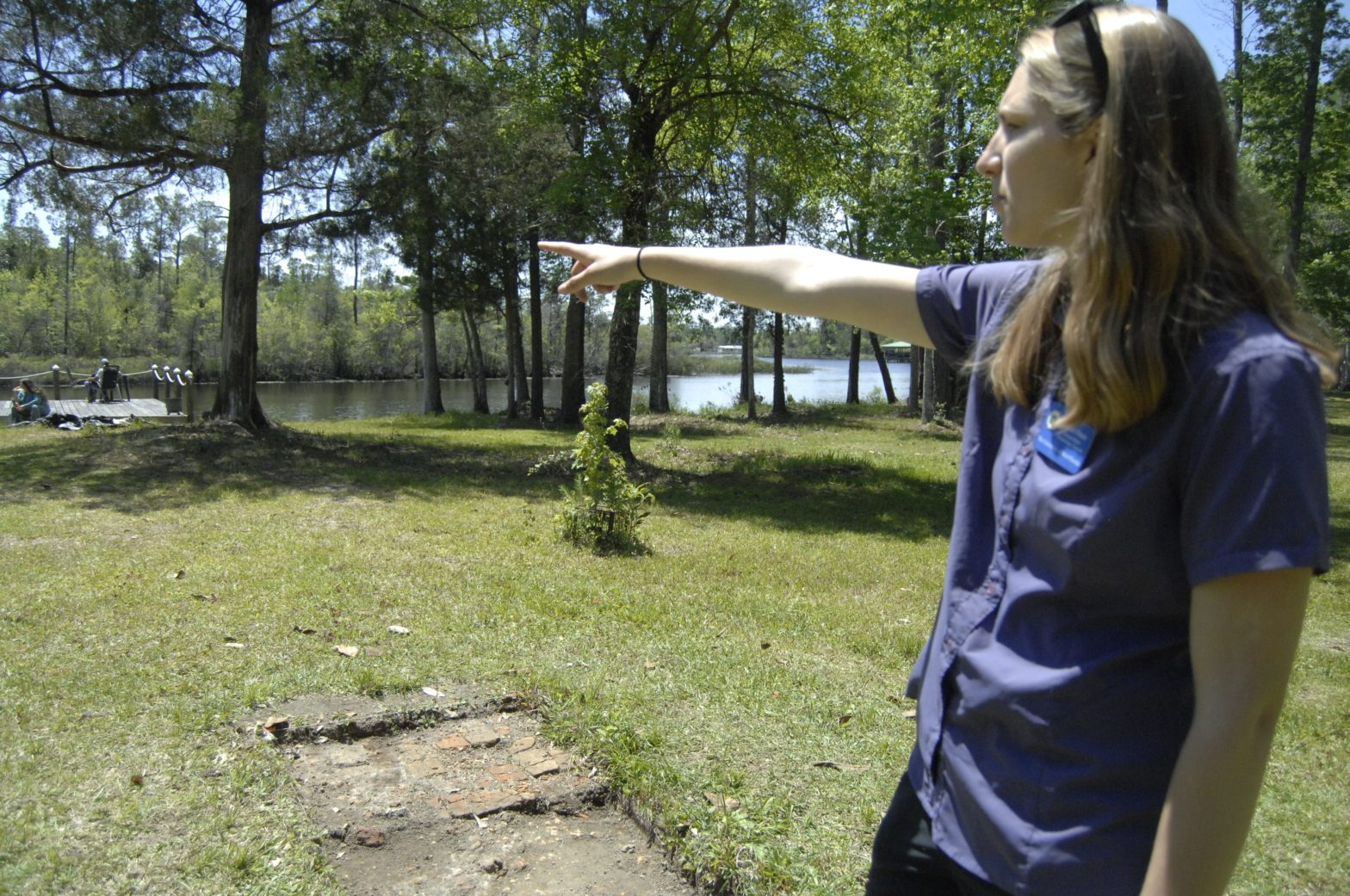![University of West Florida graduate student Rachel Hines explains the excavation process at the Scott Site. [ALICIA ADAMS | Press Gazette]](http://127.0.0.1/wordpress/wp-content/uploads/2022/01/ghows-DA-6a9d89c6-7d21-23c3-e053-0100007f5dd2-13055ea5-scaled.jpeg)
MILTON — Milton High School's archaeology and anthropology class under teacher Steve Ramirez receives hands-on experience by uncovering some of Milton’s early industrial heritage at a private site known as the Scott Site.
This is the ninth year the school has partnered with the University of West Florida’s program Florida Public Archaeology Network for this research. Milton High is the only school in the state that offers a year-long course in archaeology.
“They are learning all about archaeology. They are learning about the processes… methods… and about Florida history,” Ramirez said, "not just Florida history, but the complete history of this country. It is a phenomenal class for these kids.
“Once a week, in theory, we come out to this site… These kids are getting to participate in activities most people would never get to.”
The homeowners, Rick and Diane Scott, had reported brick piles in their yard and brick spills along the Blackwater River behind their home. With guidance from the archaeologists of FPAN, students established a grid, took precise measurements, followed scientific procedures, mapped excavations and sorted artifacts they uncovered at the site.
“[The students] have been continuing in the same units they’ve been working in last year, so it’s kind of the same goal, just a little bit deeper,” UWF graduate student Rachel Hines said. “We also had them doing ground penetrating radar, which is a remote sensing technique. It’s noninvasive, so it doesn’t dig up the earth.”
The students also participated in maritime surveying on the river. Their findings show the deep industrial history of the Blackwater River and surrounding area, including the proliferation of brickyards in the 19th century.
According to their research, the excavated foundations are associated with brickyard buildings and brick kilns owned by John Bahan in the 1800’s.
According to Hines, the Scotts have found evidence near their house suggesting the possible presence of slave cabins during the industry’s prime. The students used the noninvasive radar technique to search for foundations under the earth.
“Our main goal is getting them out and interacting with their local history, and then learning the techniques and learning the importance of the site and excavating scientifically,” Hines said. “We’re hoping to encourage not just picking up artifacts or digging up sites, but thinking through it more carefully.”
Della Scott-Ireton, associate director of FPAN, said it’s important for the students to be aware that archaeology is in their back yard.
“When people think about archaeology, they think about ancient Greeks and Romans. They don’t think about the archaeology that’s right here,” Scott-Ireton said. “They’re engaging with their own history."




This article originally appeared on Santa Rosa Press Gazette: Students uncover local history through archaeology
